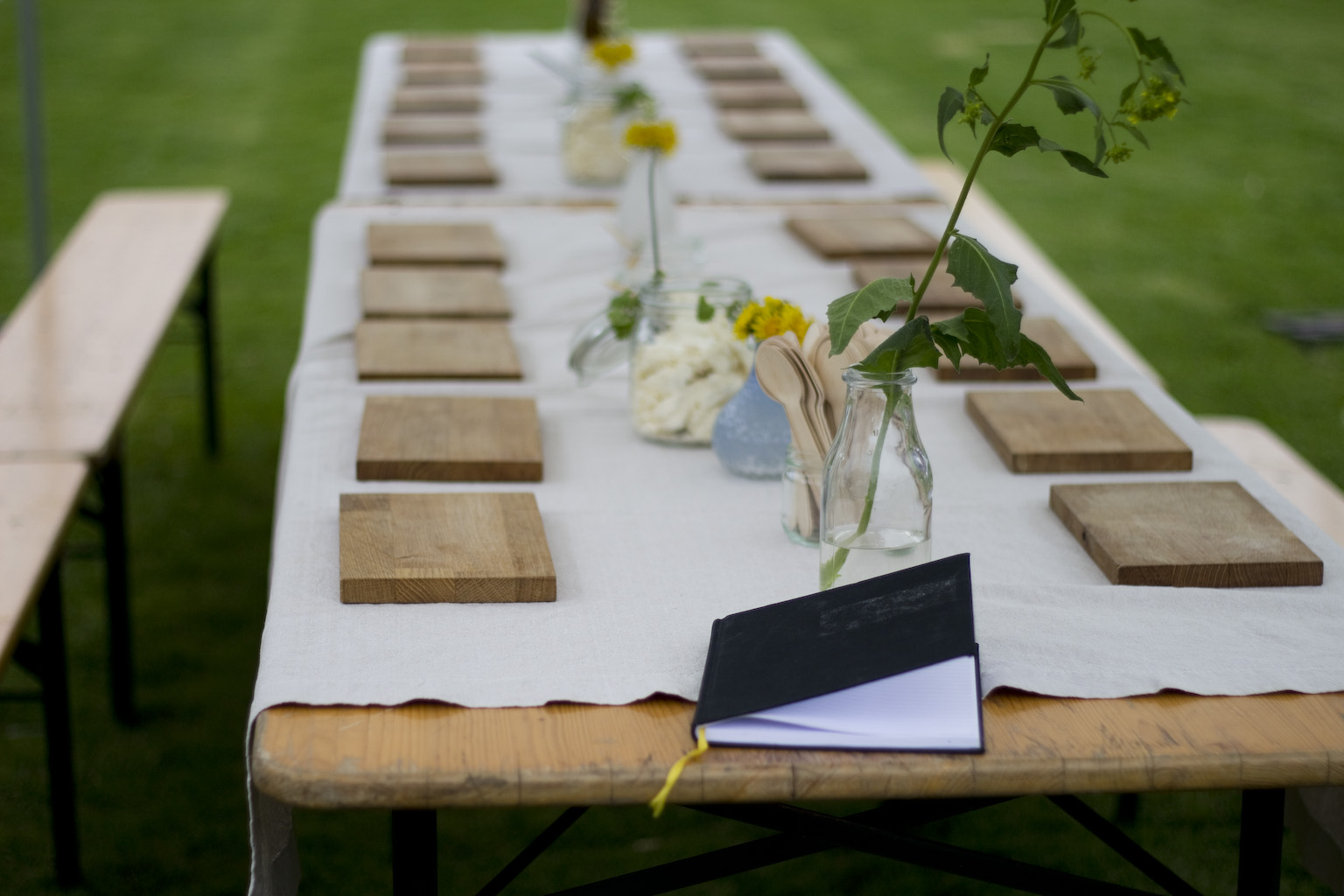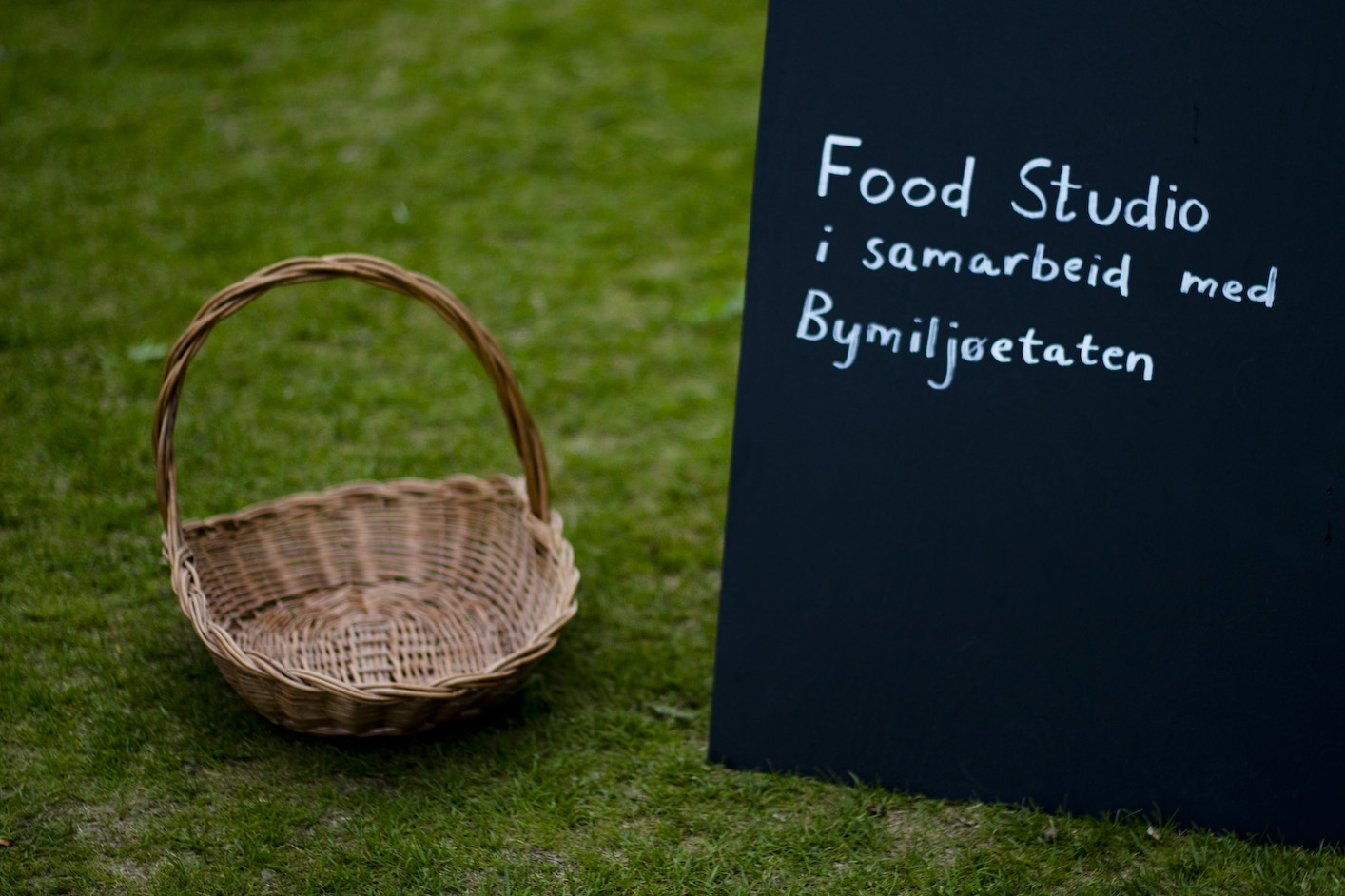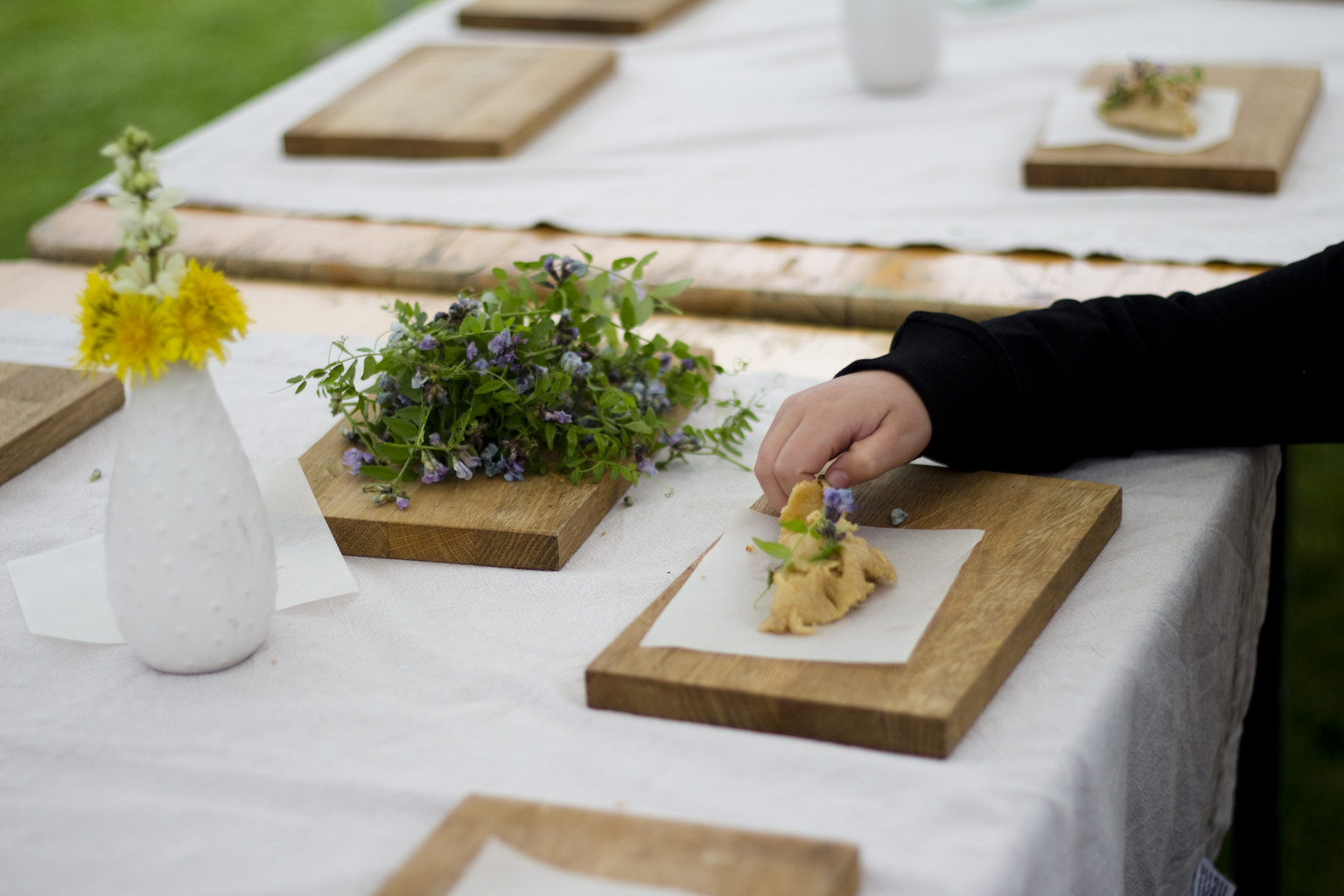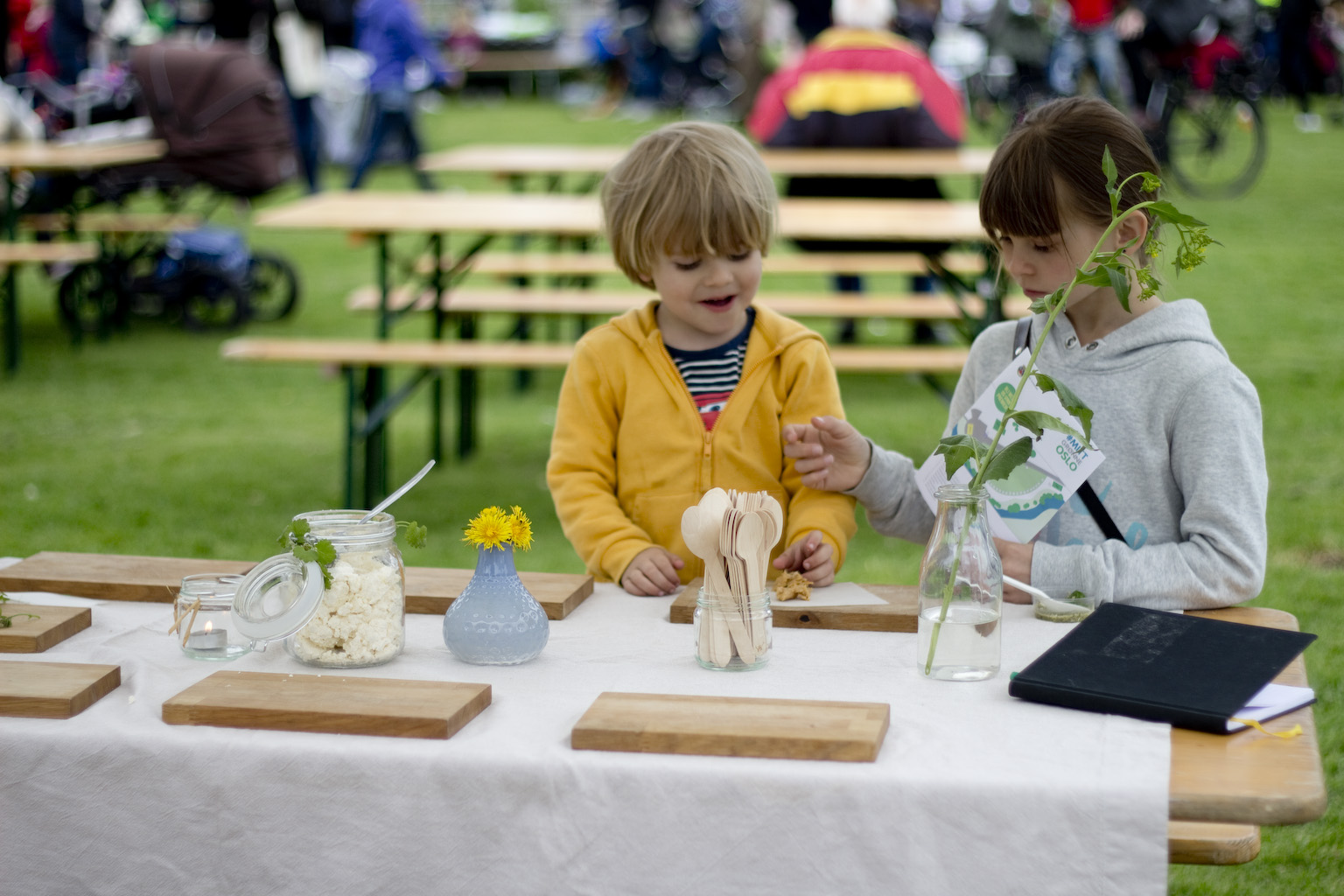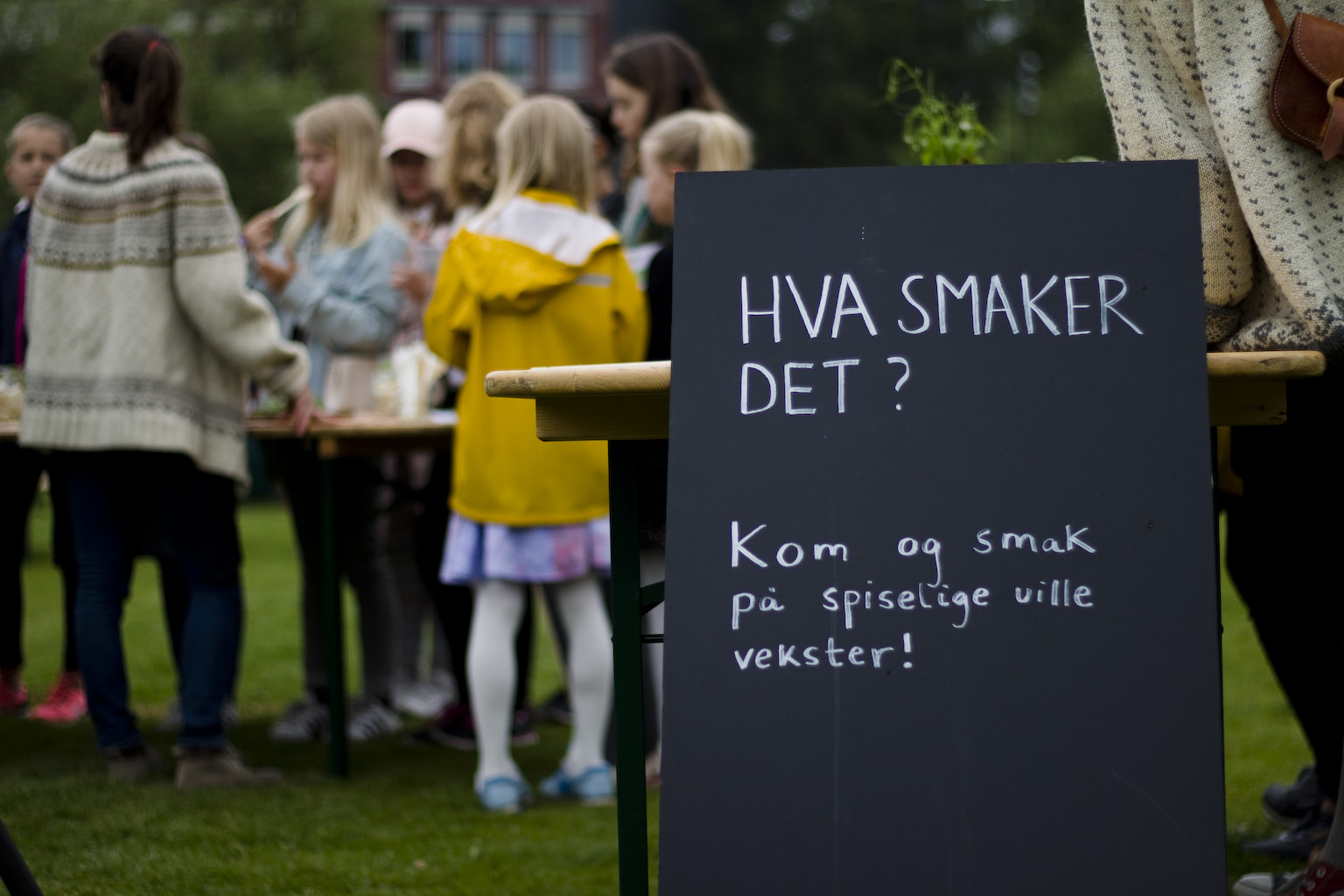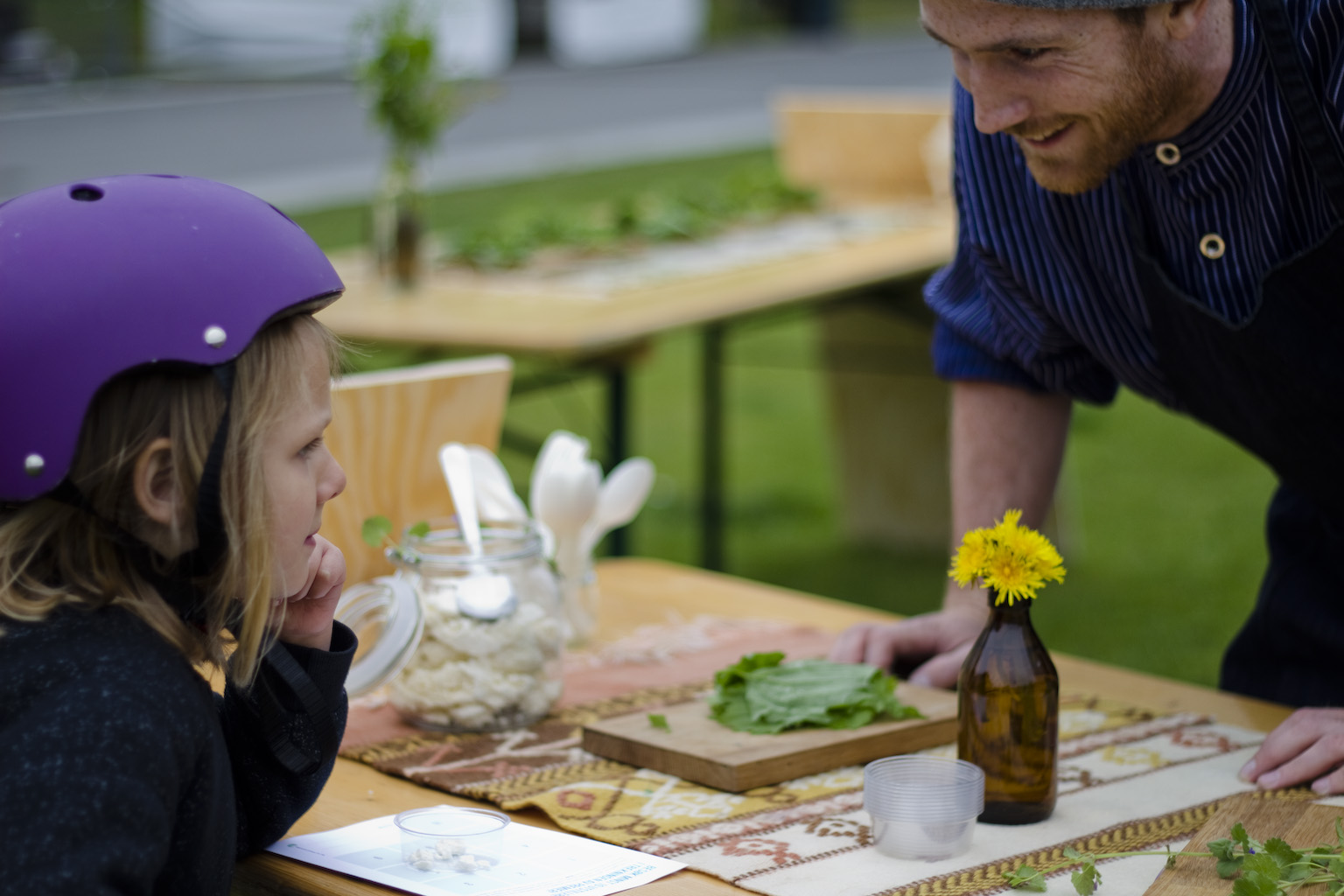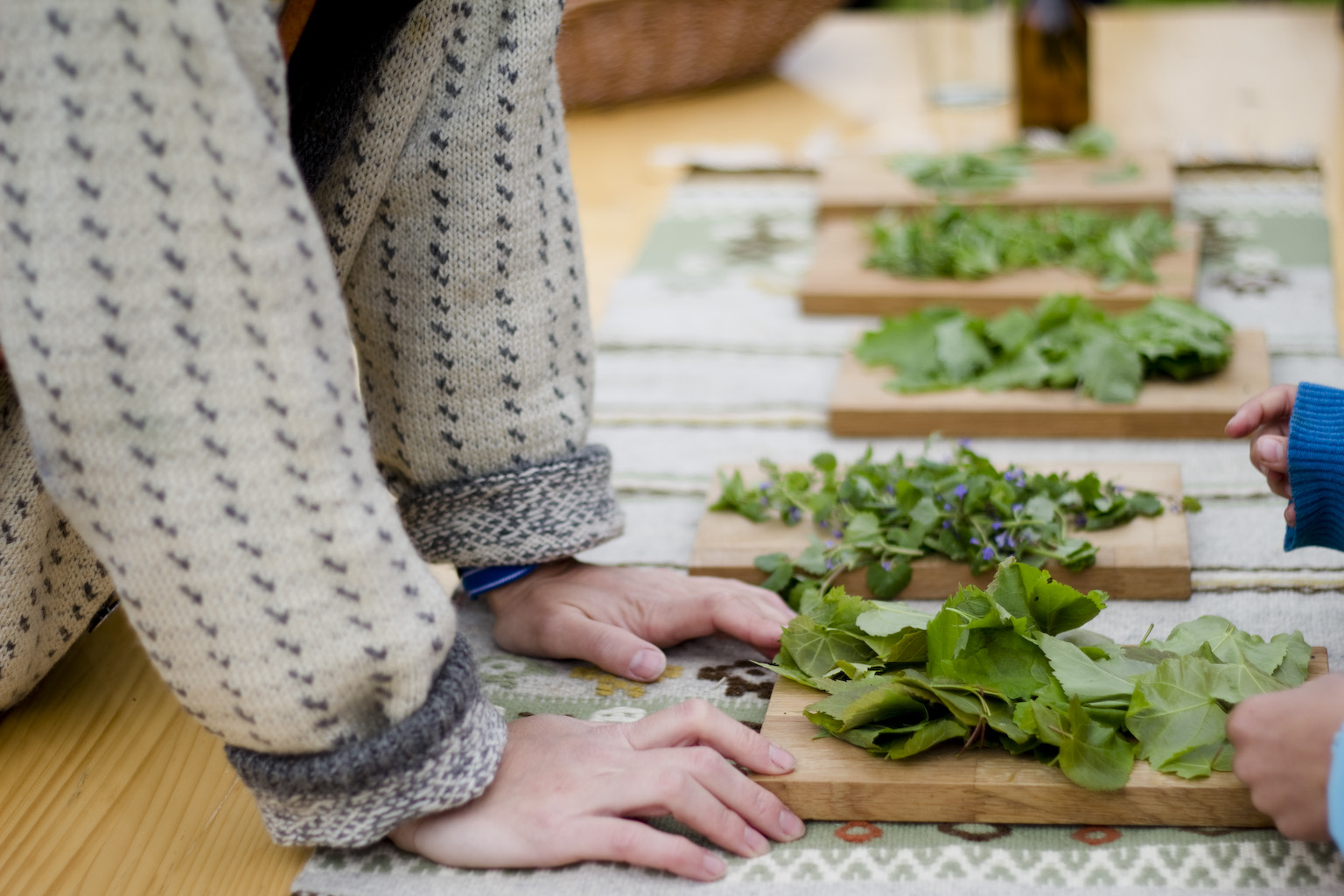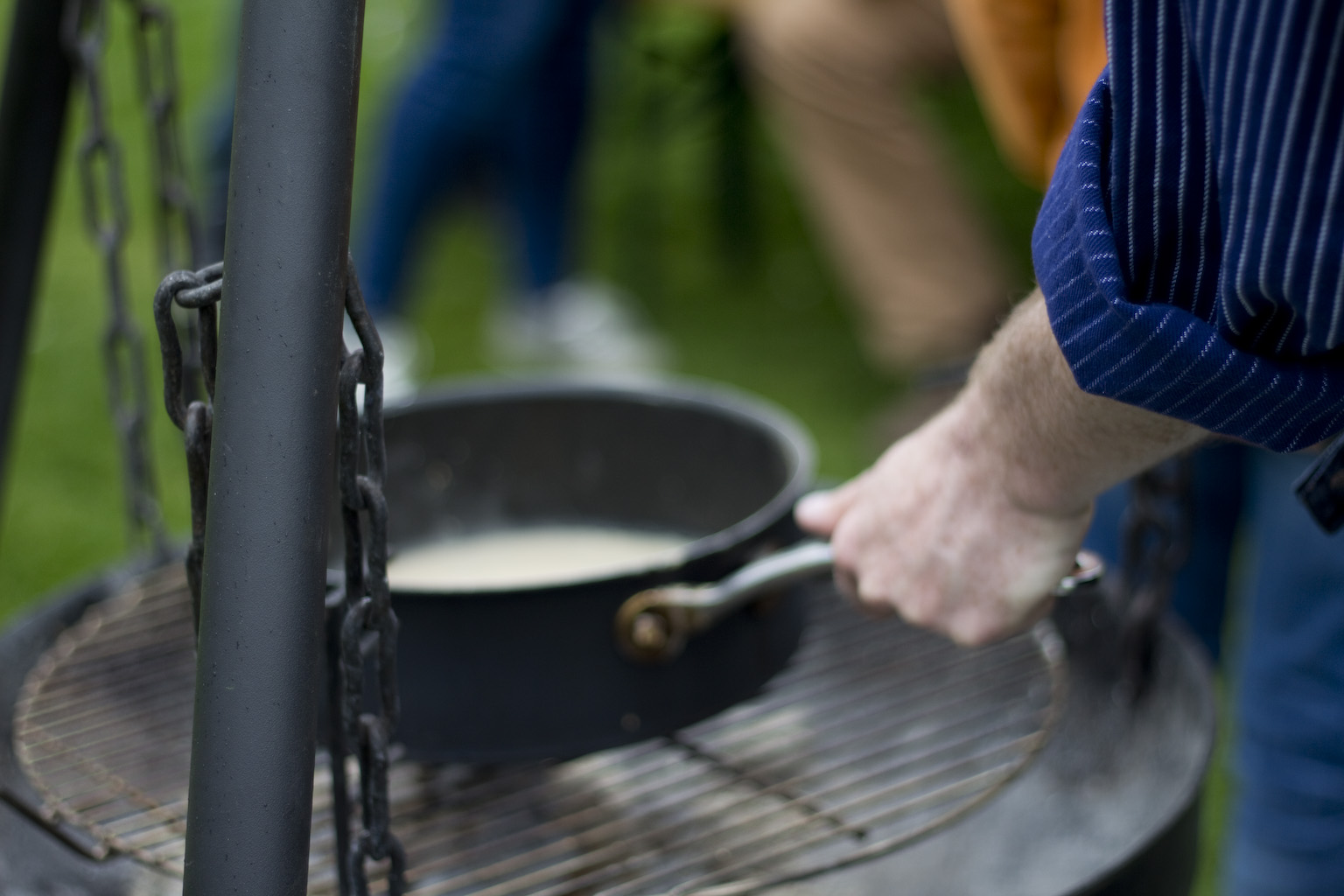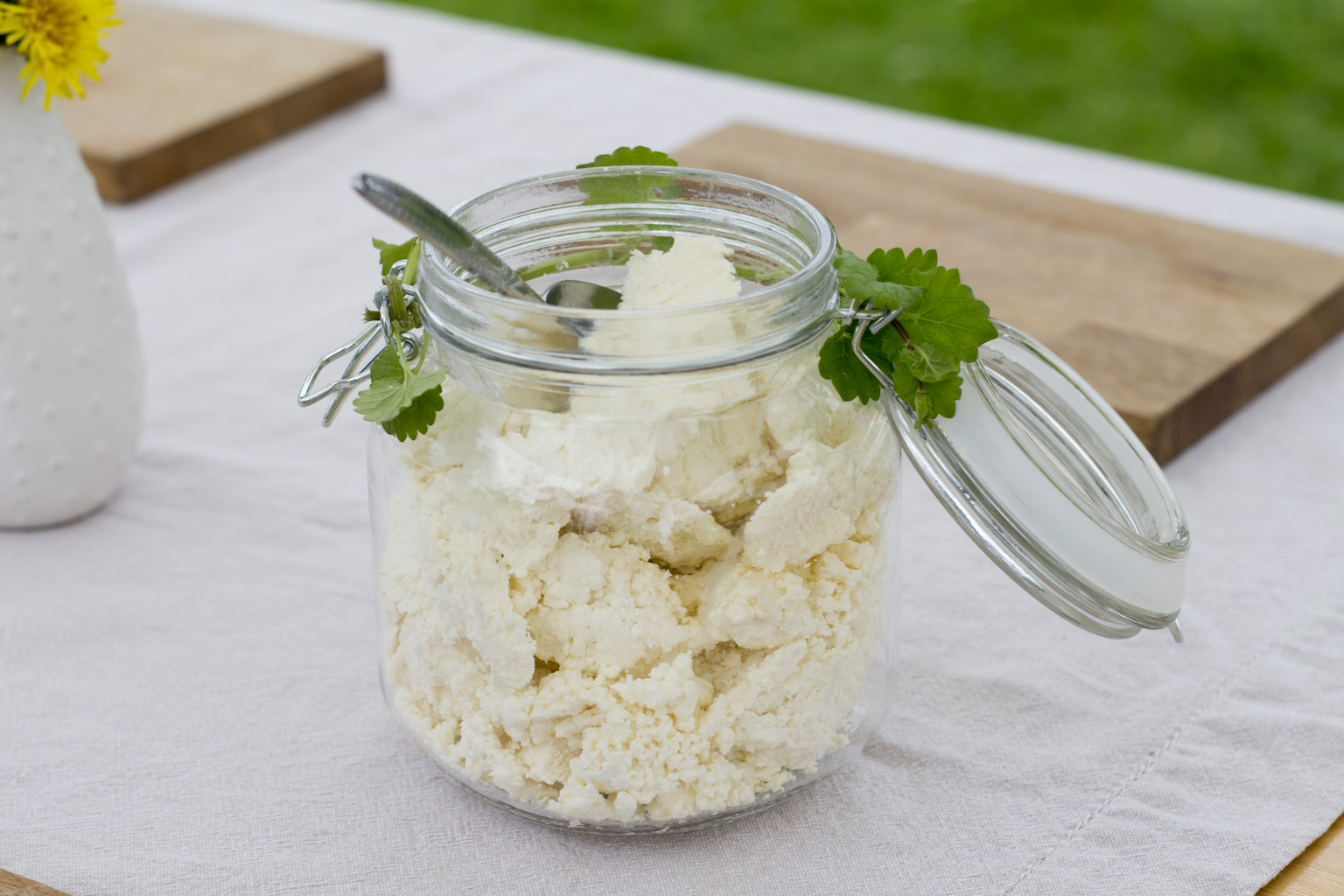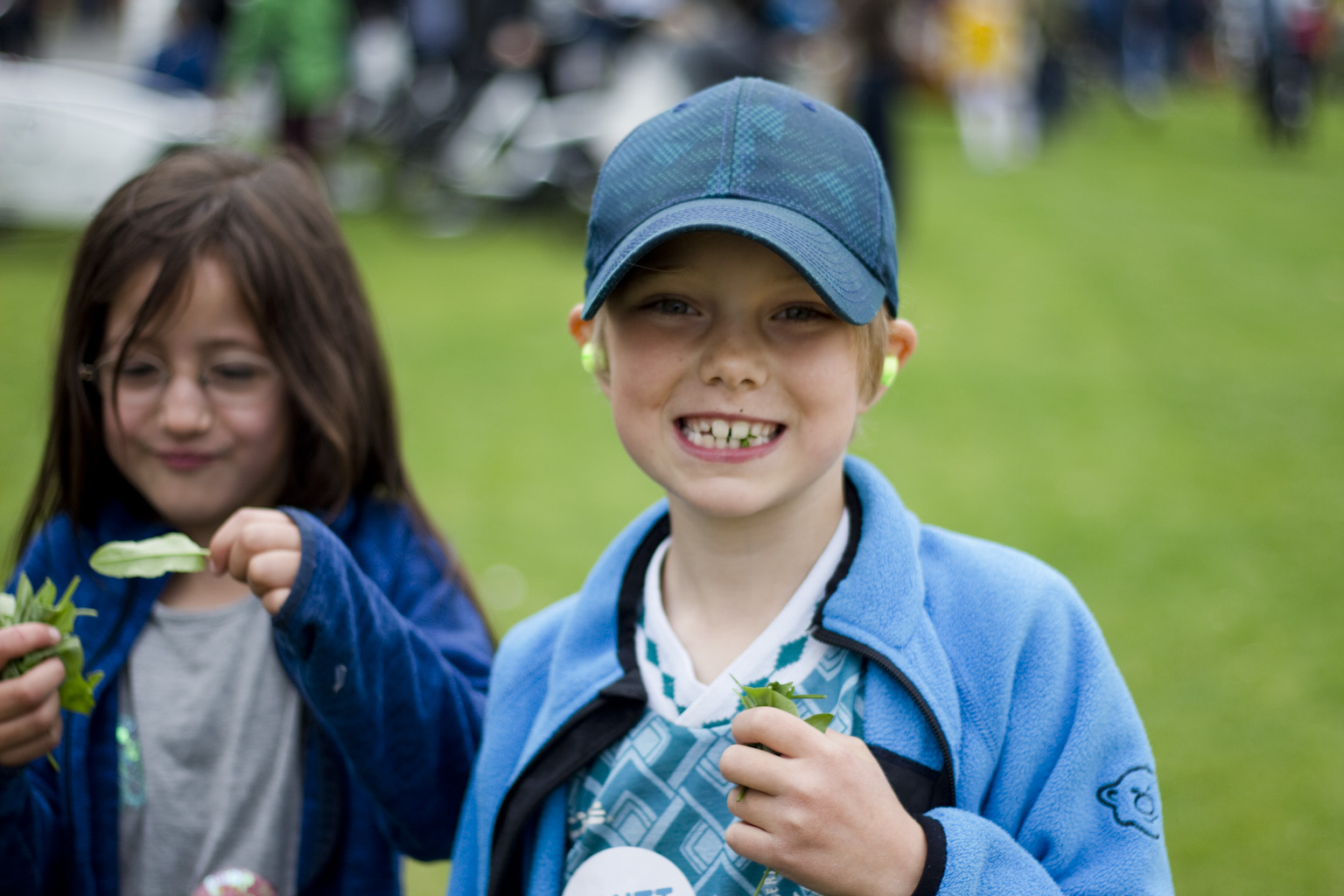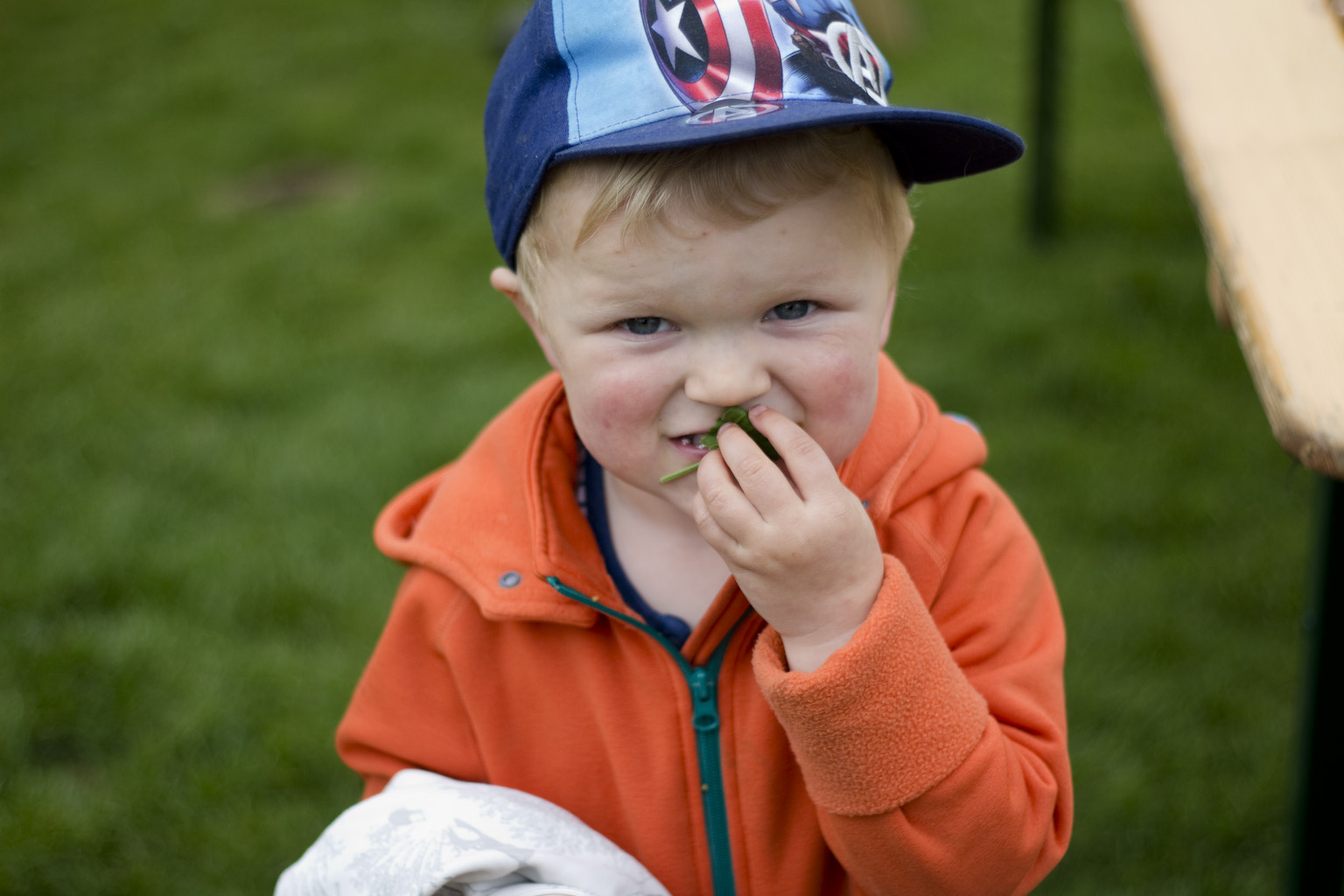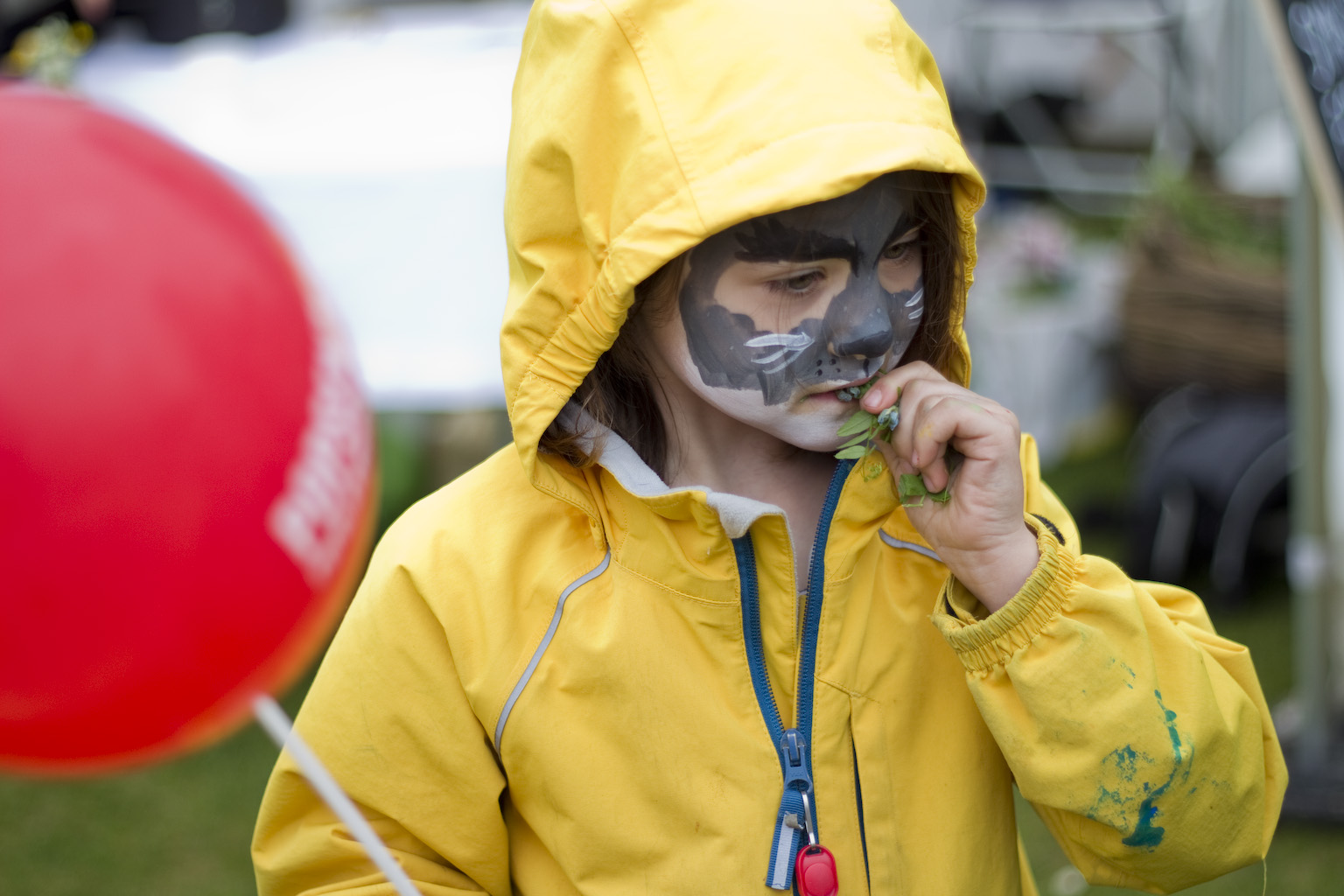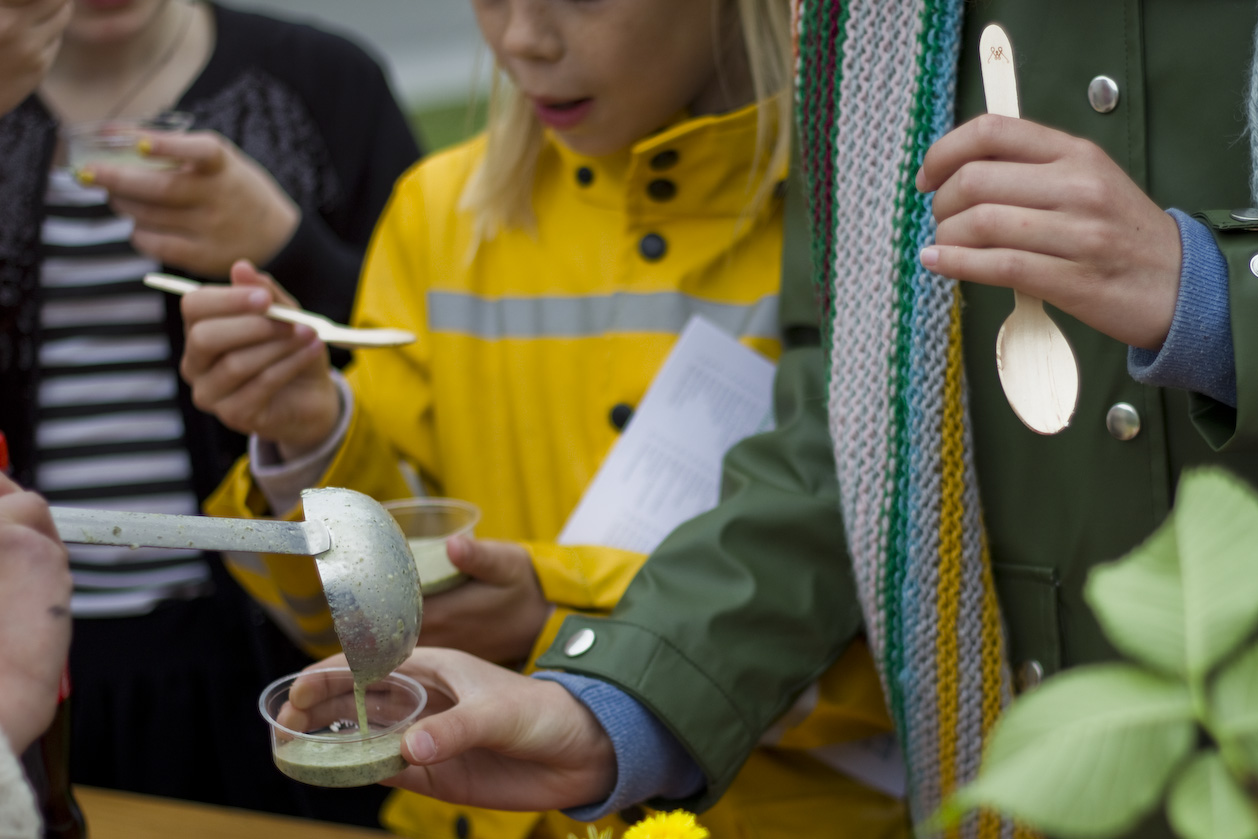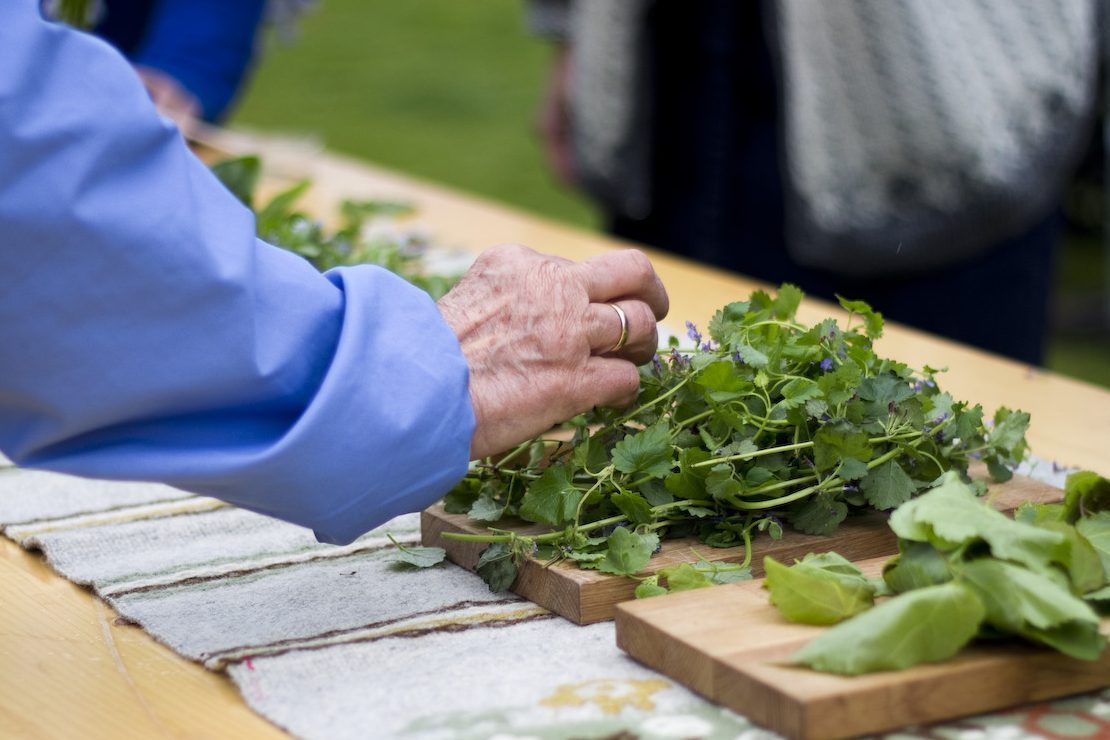Pastevent
Edible Wild Plants
— Mitt grønne Oslo
Utica diotica, Ulmus glabra, Alliaria petiolata, Glechoma hederacea, Taraxacum officinale, Vicia sepium.
Some use the plants as medicine; others use them in cooking. Have you tasted any? What did it taste? Like liquorice? Sour? Sweet?
Many of the edible wild plants are high in nutrition, and can spice up or decorate your meal. This year Food Studio celebrated the World Environment Day by taking part in Oslo Municipality’s green festival, Mitt grønne Oslo. The one-day festival is an annual event, where the municipality wishes to cooperate with citizens, businesses and the state for a better Oslo environment. In collaboration with the Agency for City Environment in Oslo, Food Studio contributed to the festival by creating a taste workshop with edible wild plants for children.
Visitors were encouraged to use their senses, by tasting and decorating with flowers and plants that were gathered in the Oslo-area the same day and the day before. To involve, engage and inspire more people in the world of wild plants we brought with us an expert. Britt Kornum showed us the distinction between the plants, helped us put words on what they tasted, and explained where we could find them. It is important to always know the plants you are harvesting, as some of the plants have poisonous look-alikes. However, when you do know, there are endless possibilities in how the edible plants can be used.
To make our stand as interesting and engaging for children as possible, we also brought with us a teacher. Michael Stilson and his pedagogical approach created an atmosphere of curiosity and big eyes. Our dear friend Håkon Nesheim let us borrow his campfire pan. Placed in the middle of our stand, Michael used the campfire pan to make pancakes. The pancakes were then served with topping of the children’s choice: all edible plants or flowers.
Nettle soup (nettle gathered at Bygdøy, parsnip, carrot, garlic and milk) made by Food Evolution, was served from small cups that looked like plastic – but it was not. The event was plastic free, and everything from cups to cutlery was compostable. Compostable products are made from renewable resources such as corn, bamboo, and bagasse sugarcane – not from petroleum. When handling the compostable products right, they will turn into soil. Compostable products should end up at a commercial composting site that accepts compostable food service products. In Norway this means that the products can simply be thrown in the green recycling bag for food waste.
The children could also taste and decorate homemade cheese with flowers and plants. Food Evolution made the cheese the day before by warming up milk till 48 degrees before adding rennet. Rennet is an enzyme that causes the proteins in the milk to form a curd. The enzyme can only be found in the stomachs of ruminant mammals, and in Norway one can buy the enzyme in pharmacies. Adding rennet to the milk allows liquid to separate and run off as whey. After having added the rennet, Food Evolution let the curds lie overnight for the final drainage of liquid. The time spent on drainage is dependent on how dry you want the cheese.
Maps from the local community were put on the table, with suggestions for “wild plant gathering” tours in the area. And all the wild plants that were served that day were gathered close to the area where the green festival took place, so that the visitors could see that there is nutritious, free and tasty plants that can be used for cooking and decoration just outside their doorstep.
Words and photographs by Anja Bergersen
